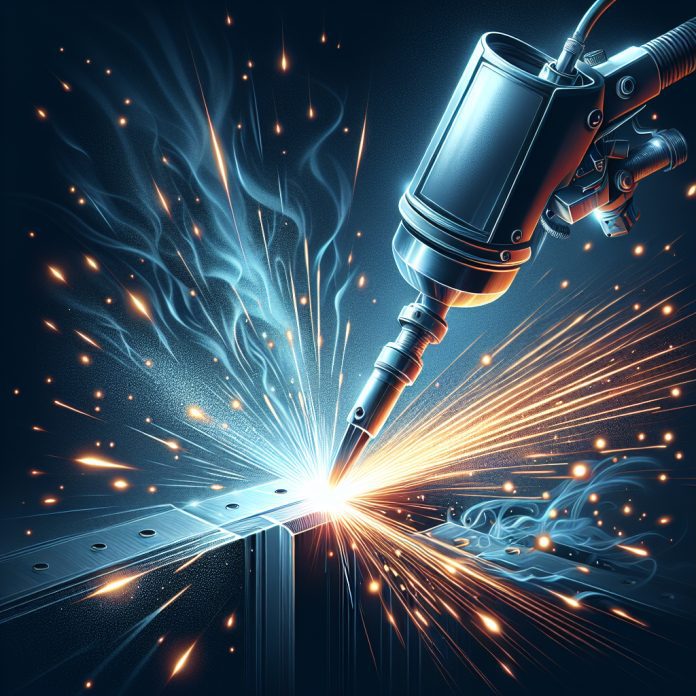Gas Metal Arc Welding (GMAW), also known as MIG welding, offers a myriad of benefits when it comes to high-speed welding. This innovative technique utilizes a continuous feed of a consumable electrode wire, along with an inert gas shield, to create strong and precise welds. The benefits of GMAW for high-speed welding are numerous, including increased productivity, excellent weld quality, and versatility in welding various metal types and thicknesses. Whether you’re working on automotive assembly lines or heavy fabrication projects, GMAW is a game-changer for high-speed welding.
Review contents
Benefits of Using Gas Metal Arc Welding for High-speed Welding
Gas Metal Arc Welding (GMAW), also known as Metal Inert Gas (MIG) welding, is a popular welding technique in various industries, particularly for high-speed welding applications. This article will explore the numerous benefits of using GMAW for high-speed welding, ranging from increased travel speed to reduced fumes and spatter.
Increased Travel Speed
One of the significant advantages of GMAW for high-speed welding is its ability to achieve increased travel speed. This welding technique involves a continuous wire feed, allowing for a faster deposition rate compared to other welding processes. With GMAW, we can complete welding projects at a faster pace without compromising the integrity and quality of the weld.
High Quality Welds
Despite the increased travel speed, GMAW still delivers exceptional quality welds. The use of a shielding gas, typically argon or a mixture of argon and carbon dioxide, helps protect the weld pool from atmospheric contaminants. This shielding gas also aids in preventing porosity, oxidation, and other defects that may compromise the strength and durability of the welds. With GMAW, we can achieve aesthetically pleasing, high-quality joints with excellent mechanical properties.
Versatility
Another advantage of using GMAW for high-speed welding is its versatility. This welding technique can be applied to various metals, including carbon steel, stainless steel, aluminum, and other alloys. By adjusting the shielding gas, wire type, and welding parameters, we can tailor GMAW to meet the specific requirements of different materials, thicknesses, and joint designs. This versatility makes GMAW a reliable choice for a wide range of applications across industries.
Cost-effective
GMAW offers cost-effectiveness, making it an attractive option for high-speed welding projects. The continuous wire feed ensures efficient material usage, reducing waste and optimizing productivity. Furthermore, the relatively affordable equipment and consumables required for GMAW contribute to its cost-effectiveness. The ability to complete welding tasks quickly and with high quality also translates to increased productivity and savings in terms of labor and time.
Ease of Use
The ease of use associated with GMAW is yet another benefit for high-speed welding. This welding technique is relatively straightforward to learn and operate, making it accessible to welders of various skill levels. The continuous wire feed simplifies the feeding process, eliminating the need for constant electrode changes. Additionally, GMAW can be easily automated through mechanized or robotic systems, further enhancing efficiency and reducing the dependency on manual labor.
Reduced Heat Input
GMAW is known for its low heat input, which is advantageous when welding thin metals. The controlled heat input minimizes the risk of distortion and warping, particularly in materials with low heat tolerance. This makes GMAW suitable for applications where precision and dimensional accuracy are crucial, such as in automotive manufacturing or delicate fabrication projects. The ability to maintain low heat input also helps reduce the need for extensive post-weld heat treatments.
Reduced Distortion
One of the key concerns in welding is distortion, which refers to the twisting or bending of the base metal caused by uneven heating and cooling during the welding process. GMAW helps address this issue by allowing for reduced heat input, as mentioned earlier. The controlled heat minimizes the distortion, resulting in more accurate and aesthetically pleasing welds. The reduced distortion also reduces the need for additional corrective processes, saving both time and effort.
Suitable for Thin Metals
GMAW is particularly suitable for welding thin metals due to its low heat input and precise control. Thin metals, such as sheet metal or thin-walled pipes, are often vulnerable to burn-through or warping during welding. However, GMAW’s ability to maintain low heat and its fine control over welding parameters help mitigate these challenges. With GMAW, we can achieve successful welds on thin metals without compromising their structural integrity or appearance.
Limited Post-Weld Cleanup
One of the more time-consuming aspects of welding is the post-weld cleanup. However, GMAW minimizes the need for extensive cleanup due to its clean and controlled weld process. The use of shielding gas helps to prevent excessive spatter, reducing the need for labor-intensive cleaning. Additionally, the absence of slag, which is commonly associated with other welding processes like Shielded Metal Arc Welding (SMAW), eliminates the need for slag removal, further streamlining the post-weld cleanup process.
Reduced Fumes and Spatter
Lastly, GMAW produces reduced fumes and spatter compared to other welding methods. The use of shielding gas provides a protective barrier that prevents the weld pool from excessive atmospheric exposure. This reduces the generation of fumes and minimizes the release of harmful particulates into the surrounding environment. The decrease in spatter also contributes to a cleaner and safer work environment, allowing for a more efficient welding operation.
In conclusion, GMAW offers numerous benefits for high-speed welding applications. From increased travel speed and high-quality welds to versatility, cost-effectiveness, and reduced fumes and spatter, GMAW proves to be a reliable and efficient welding technique. Its ease of use, reduced heat input, distortion reduction, suitability for thin metals, limited post-weld cleanup, and overall cleanliness make it a preferred choice for various industries seeking fast and reliable welding solutions.


























